Understanding the bowling pin layout is essential for players at every skill level. This arrangement of ten pins forms the foundation of the game, directly influencing scoring, strategy, and shot selection. In fact, the standard bowling pin layout follows a precise triangular pattern, with each pin positioned at exact intervals. This consistency ensures fairness and uniformity across all lanes and tournaments. Moreover, knowing how the pins are set helps bowlers anticipate ball reaction and adjust their approach accordingly. For example, hitting the right spot in the layout increases strike potential. Also, spare conversions depend heavily on which pins remain standing after the first roll.
Furthermore, the bowling pin layout plays a crucial role in lane maintenance and automated systems. Modern bowling alleys use pinsetter machines that rely on this fixed formation to reset pins efficiently. These machines detect fallen pins and reposition the remaining ones with high accuracy. As a result, gameplay remains smooth and uninterrupted. In addition, professional leagues and training programs emphasize mastering shots based on the pin layout. Coaches often break down angles, entry points, and deflection patterns tied to specific pin positions.
Another important aspect is visual alignment. Bowlers use reference points on the lane—such as arrows or dots—to aim toward key areas of the bowling pin layout. This targeting improves consistency over time. Meanwhile, beginners benefit from learning common splits and combinations caused by different ball paths. Therefore, familiarity with the layout enhances both performance and enjoyment. Whether you’re playing casually or competitively, recognizing how the pins interact within the layout gives you a strategic edge.
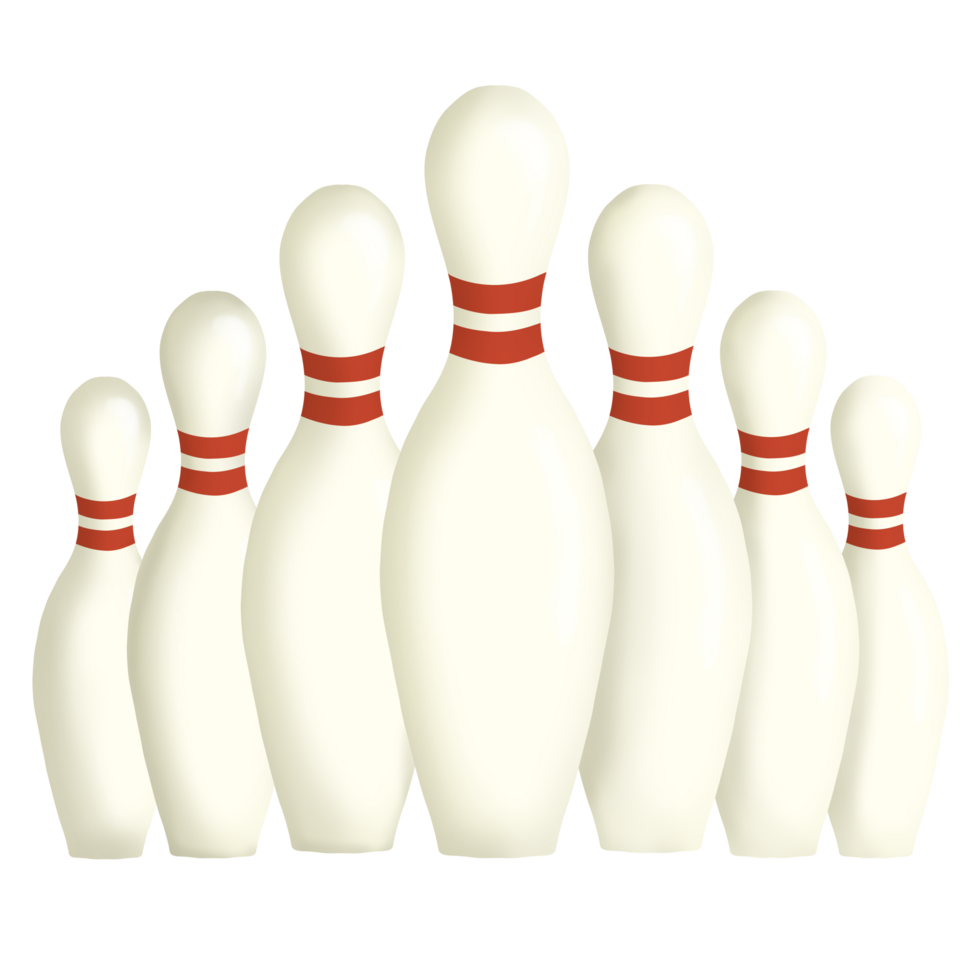 The Standard Pin Layout: Structure and Measurements
The Standard Pin Layout: Structure and Measurements
The standard bowling pin layout consists of ten pins arranged in four rows. First, the front row has one pin, known as the headpin or number 1 pin. It stands closest to the bowler and serves as a primary target. Second, the next row contains two pins—number 2 on the left and number 3 on the right. These flank the headpin and help initiate chain reactions during strikes.
Third, the third row includes three pins: numbers 4, 5, and 6 from left to right. The number 5 pin sits directly behind the headpin, forming a central axis. Finally, the back row holds four pins—numbers 7, 8, 9, and 10. Pins 7 and 10 are furthest from the center and often harder to reach with angled shots.
Each pin is spaced exactly 12 inches apart from its neighbors. This distance is measured from the center of one pin to the center of the adjacent pin. The entire formation creates an equilateral triangle with the peak facing the bowler. Additionally, the pins stand on a wooden or synthetic deck, secured in pre-drilled holes that match the bowling pin layout precisely.
The spacing allows for controlled deflection. When a ball hits the pocket (between pins 1–3 for right-handers or 1–2 for left-handers), it sends energy through the layout. This transfer knocks down multiple pins in sequence. If the spacing were tighter or looser, the dynamics would change drastically. Therefore, maintaining accurate measurements is vital for fair play.
Also, pin weight and height follow regulated standards. Each pin weighs about 3 pounds 6 ounces and stands 15 inches tall. Uniformity in size and shape ensures predictable behavior upon impact. Altogether, these details define the official bowling pin layout used worldwide.
How the Pin Layout Affects Scoring and Strategy
The bowling pin layout directly shapes scoring opportunities and strategic decisions. First, knocking down all ten pins in one roll results in a strike. This outcome depends on hitting the correct entry point within the layout. For most players, that means aiming for the pocket area. Right-handed bowlers typically target between the 1 and 3 pins. Left-handed players aim between the 1 and 2 pins.
Second, if not all pins fall on the first roll, the remaining pins form a spare setup. The configuration determines difficulty. For instance, a simple two-pin spare like 7–10 requires precision but is manageable with practice. However, challenging splits such as the 7–10 or 4–6–7–10 are notoriously hard due to wide separation in the bowling pin layout.
Moreover, understanding pin interaction helps improve conversion rates. Some pins act as “sweepers.” For example, the 2 pin can knock over the 4 and 8 if hit correctly. Similarly, the 3 pin may drive the 6 and 10. By studying these patterns, bowlers adapt their angles and ball speed.
Another factor is ball deflection. After hitting the front pins, the ball moves sideways through the layout. Skilled players use this motion to maximize pin carry. They adjust their starting position and target based on expected deflection paths.
Additionally, lane conditions affect how the ball travels toward the layout. Oil patterns influence hook potential. A dry lane causes earlier hooking, which may miss the ideal pocket. Conversely, too much oil delays hooking, leading to lighter hits. Thus, bowlers must balance technique with environmental factors.
Finally, spare shooting strategy relies on layout awareness. Instead of trying risky angles, many players use a straighter shot aimed directly at the front pin. This method increases accuracy. Overall, mastering the relationship between ball path and bowling pin layout leads to higher scores.
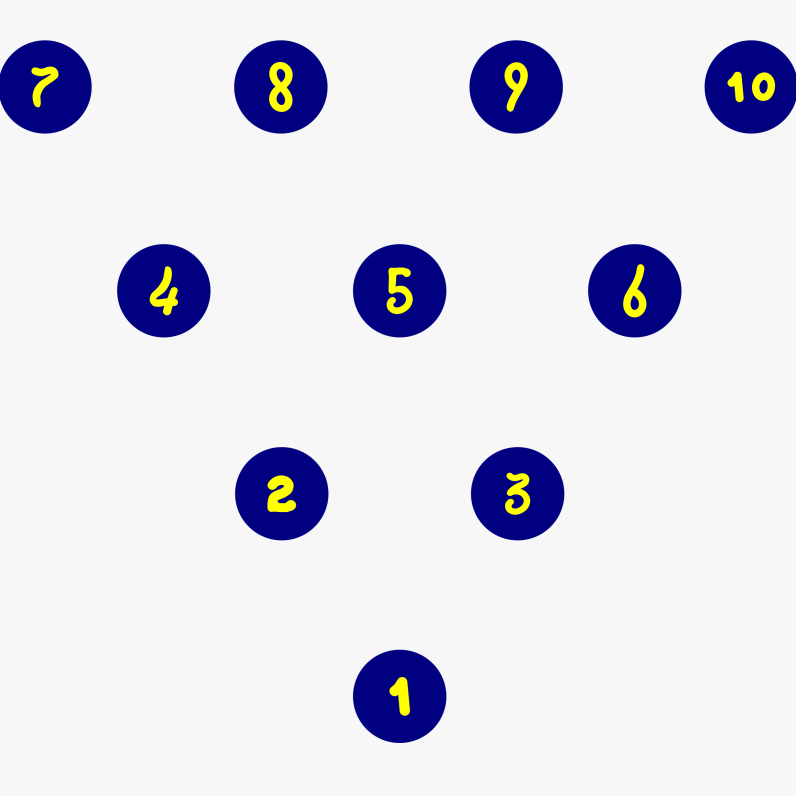 Variations of Pin Layout in Specialty Games
Variations of Pin Layout in Specialty Games
While the standard ten-pin layout dominates, several variations exist for fun or training purposes. One popular alternative is candlepin bowling. It uses ten pins arranged in the same triangular layout but features thinner, taller pins. The balls are smaller and lack finger holes. This changes how the pins react upon impact. Because of reduced mass, full strikes are rare. Players rely more on repeated rolls and pin movement.
Another variation is duckpin bowling. The pins resemble shortened bowling pins and follow the same basic layout. However, they are heavier at the base, making them harder to knock down. The ball is hand-sized with no finger holes. As a result, power and precision become even more critical.
Five-pin bowling, common in Canada, alters the layout entirely. Only five pins are used, set in a V-formation. The center pin is worth five points, while others are worth two. This scoring system encourages targeted shooting rather than sweeping strikes.
Knockdown games also modify the bowling pin layout. Some use fewer pins placed in straight lines or clusters. These setups focus on accuracy drills. Others introduce moving targets or uneven surfaces to increase challenge.
Youth programs sometimes simplify the layout for beginners. They remove back-row pins or use foam versions. This builds confidence before transitioning to full setups.
In addition, virtual reality and digital simulators replicate the bowling pin layout with interactive feedback. Users see real-time data on ball speed, angle, and predicted pin fall. These tools enhance learning without physical equipment.
Even mini-bowling lanes in arcades maintain the traditional layout. Though scaled down, they preserve spacing and numbering. This consistency helps new players learn proper mechanics.
These variations show how flexible and adaptable the bowling pin layout can be. Yet, the core principles remain intact across formats.
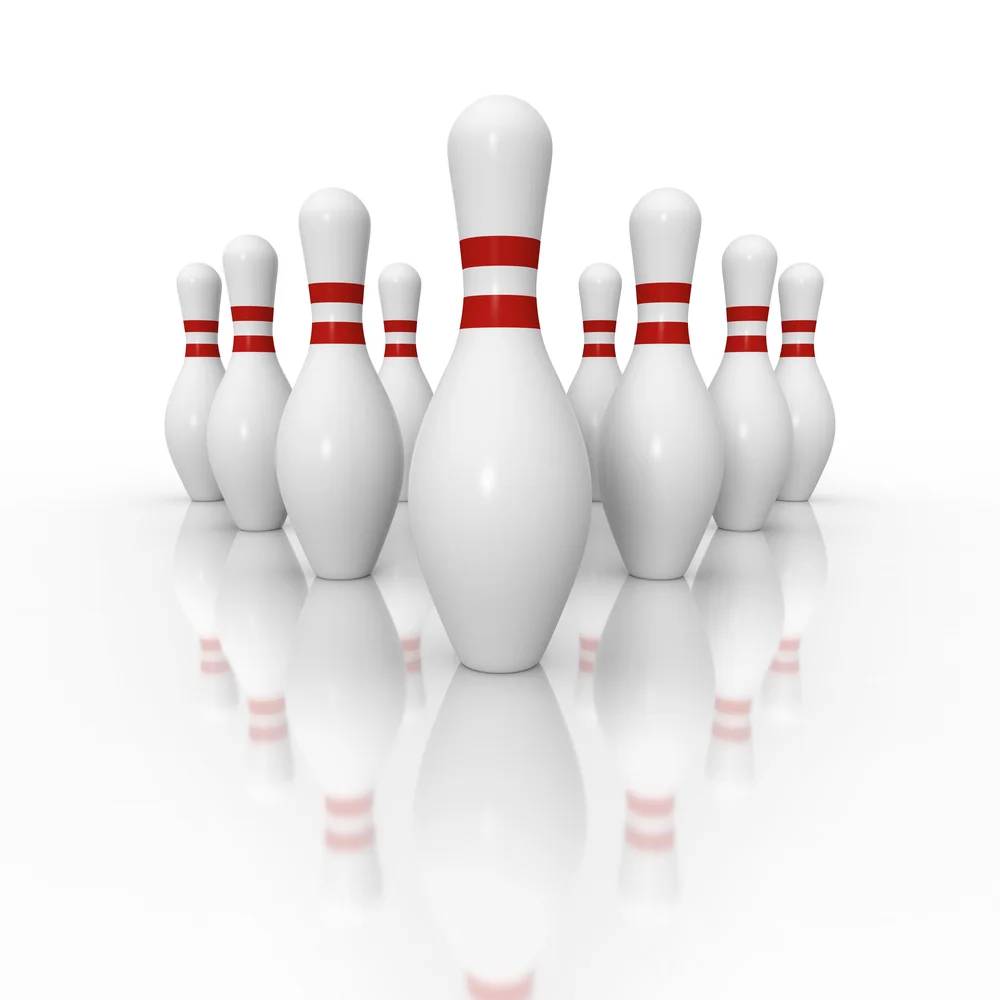 F&Q: Frequently Asked Questions About Pin Layout
F&Q: Frequently Asked Questions About Pin Layout
Q: Why are there exactly ten pins in a standard layout?
The ten-pin system evolved in the 19th century as a balanced format. It offers enough complexity for strategy while remaining manageable.
Q: Are all bowling pin layouts spaced the same?
Yes. Regulation spacing is 12 inches from pin center to center. This standard applies globally.
Q: What happens if a pin is missing or misplaced?
Pinsetter machines automatically detect errors and reset the correct bowling pin layout before the next frame.
Q: Can I practice spare shooting using partial layouts?
Absolutely. Many bowlers train with only corner pins or split formations to improve targeting.
Q: Do left-handed and right-handed players face different layouts?
No. The bowling pin layout is symmetrical. However, optimal strike zones differ slightly based on handedness.
Q: How do automatic pinsetters know where to place each pin?
They use mechanical guides aligned with the deck’s pin spots. Sensors confirm correct placement before resuming play.
Q: Is the headpin always number 1?
Yes. In every sanctioned game, the front pin is designated as number 1, regardless of league or country.
These answers clarify common concerns and deepen understanding of the bowling pin layout.
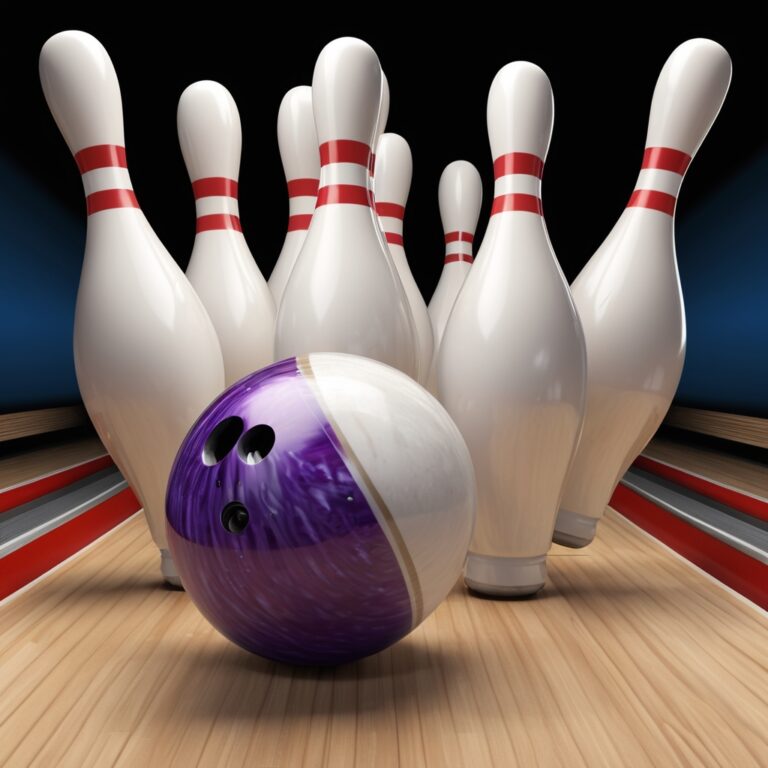 Technology and Automation in Maintaining Pin Layout
Technology and Automation in Maintaining Pin Layout
Modern bowling alleys rely on advanced technology to preserve the integrity of the bowling pin layout. At the heart of this system is the pinsetter machine. It performs several functions: detecting fallen pins, clearing debris, and resetting the exact formation. After each roll, the machine sweeps the lane surface. Then, it lifts remaining pins and returns them to their designated spots.
Next, the elevator mechanism brings new pins from storage. These pins drop into metal racks that align with the layout. Precision guides ensure each pin lands in the correct hole. Even minor misalignments could affect gameplay, so regular maintenance is required.
Optical sensors monitor pin status. They identify which pins are standing or knocked down. This data feeds into the scoring system, updating displays instantly. Some systems use cameras for enhanced detection accuracy.
Moreover, lane oiling machines work in sync with the pin layout. They apply consistent oil patterns from foul line to arrows. This preparation influences ball motion as it approaches the pins. Technicians calibrate both systems to support fair and repeatable conditions.
Digital training tools also simulate the bowling pin layout. Apps and VR platforms let users visualize pin action. They analyze ball entry angles and predict outcomes. This feedback helps refine technique off the lane.
In large centers, centralized control systems manage multiple lanes simultaneously. Staff receive alerts if a pinsetter malfunctions. Quick repairs prevent disruptions. As a result, the bowling pin layout stays accurate throughout the day.
These technological advances ensure reliability and fairness. Both casual players and professionals benefit from consistent automation.
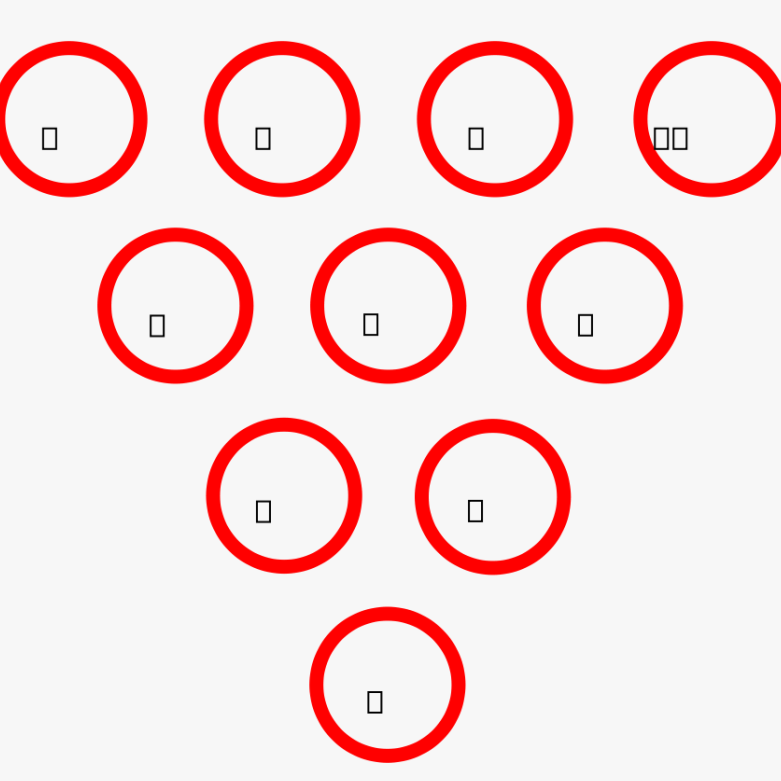 Final Thoughts on the Importance of Understanding Pin Layout
Final Thoughts on the Importance of Understanding Pin Layout
Mastering the game of bowling starts with a clear understanding of the bowling pin layout. From the precise spacing to the numbered arrangement, every detail affects how the game unfolds. Whether you’re aiming for a perfect score or working on spare conversions, knowing how pins interact gives you a competitive advantage. Furthermore, this knowledge supports better decision-making during play. It also enhances appreciation for the sport’s design and engineering. As recreational and competitive bowling continue to grow, the standard bowling pin layout remains a constant foundation. Therefore, investing time to study and practice within this framework pays off in improved performance and enjoyment. Ultimately, the bowling pin layout is more than just a setup—it’s the heart of the game.